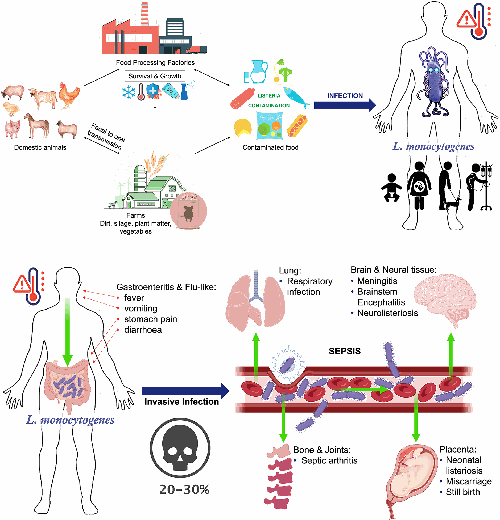
Full text loading...
Listeria monocytogenes is ubiquitous in both plant and animal reservoirs. It can persist in food production environments due to its capacity to grow at refrigerated temperatures and its resistance to biocides. The source of most human infections is contaminated food. Healthy individuals present with mild gastrointestinal symptoms. However, in immunocompromised individuals the infection is more severe, causing bacteraemia, meningitis and, in pregnancy-associated listeriosis, miscarriage and stillbirth. In vulnerable groups, including the elderly, pregnant women and their infants, listeriosis has a 20–30% mortality rate.
Listeriosis is a foodborne infection in humans caused by Listeria monocytogenes. Consumption of contaminated food can lead to severe infection in vulnerable patients, that can be fatal. Clinical manifestations include sepsis and meningitis, and in pregnancy-associated infection, miscarriage and stillbirth. Diagnosis is confirmed by culture and identification of the pathogen from blood, cerebrospinal fluid, vaginal swab, placenta or amniotic fluid. Treatment regimens recommend amoxicillin, ampicillin or an aminoglycoside. Virulence factors mediate bacterial adhesion and invasion of gut epithelial cells. Other factors mediate biofilm formation and tolerance to low temperatures and high salt concentrations facilitating persistence and survival in the environment.